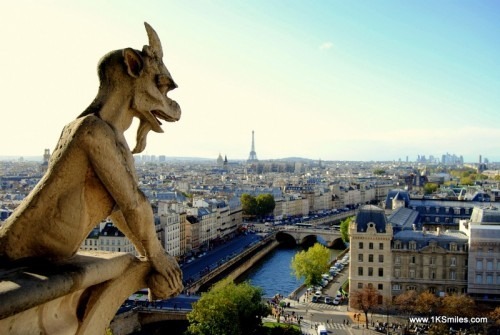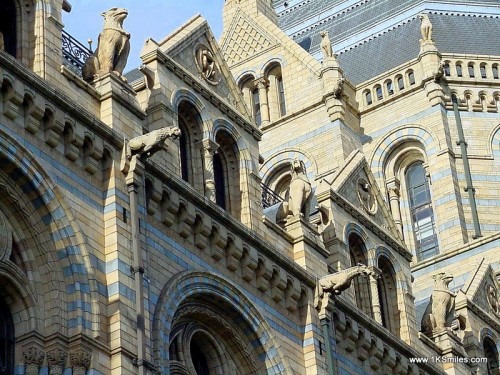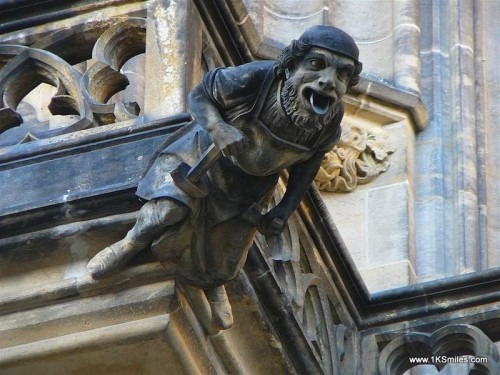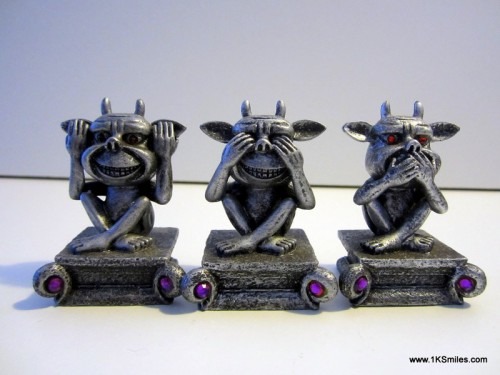A gargoyle is a grotesque carved human or animal face or figure projecting from the gutter, especially of Gothic buildings, used as a spout to carry water clear of the wall. Sometimes the gargoyle is placed just as a decoration.
The name gargoyle is often attributed to St. Romanus, or Romain. According to local French legend, he saved France from a monster by the name of Goji, sometimes called Gargouille. Legend has it the monster was so scary looking it frightened off evil spirits. This led to some seeing the monster as a protector and placing similar carved pieces on churches and other important buildings.
As always there are multiple versions to the story.
At The White Goddess we learn that La Gargouille was a legendary dragon that lived in the River Seine and in the 7th Century was ravaging the town and people of Rouen. The dragon was slain by St Romanus, the Archbishop of Rouen. After the dragon was slain its body was set ablaze and was consumed by fire but the head and neck survived and was then mounted on the walls of the newly built church to scare off evil spirits, and used for protection.
In architecture, a gargoyle is a carved or formed grotesque with a spout designed to convey water from a roof and away from the side of a building preventing rainwater from running down masonry walls and eroding the mortar. Architects would often use multiple gargoyles on buildings to help divide the rainwater flow off the roof to minimize the potential damage from the inevitable European rainstorms. A trough is cut into the back of the gargoyle and rainwater exits through the open mouth. When not constructed as a waterspout and only serving an ornamental or artistic function, the correct term for such a sculpture is a chimera or boss.
The term gargoyle is most often applied to medieval work but in Ancient Egyptian architecture, gargoyles showed little variation, typically in the form of a lion’s head. Similar lion-mouthed water spouts were also seen on Greek temples. Although most gargoyles have grotesque features, the term gargoyle has come to include all types of images. Some gargoyles were depicted as monks, or combinations of real animals and people, many of which were humorous. Sometimes the gargoyle will even take the form of the Three Wise Monkeys.
Have you ever seen a gargoyle? Where? Do you prefer the scary or the comical ones? Share your thoughts in the comments. Would love to hear from you.
If you liked this or any other posts you read on 1KSmiles, please share it with your friends using the Shareaholic buttons below.
And feel free to ‘like’ us on our Facebook page.
Get your own Emmett the Gargoyle sculpture by Design Toscano here today on Amazon.





